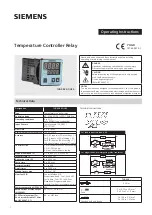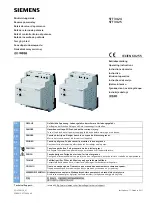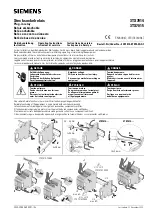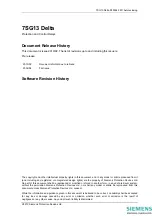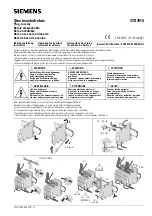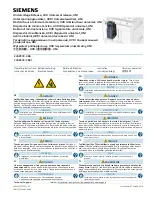
4-24
Control Logic
Date Code 20020129
SEL-387E Instruction Manual
logical 0. The ! operator can be applied to parentheses containing several elements. The
expression within the parentheses is evaluated first, then the result is negated.
Rising-Edge and Falling-Edge Operators, / and \
These operators can be applied to individual Relay Word bits only; they cannot be used on
groups in parentheses or on negated elements. Instead of detecting the present value of Relay
Word bits, as do most operators, these operators are only intended to detect a change of value.
The rising-edge operator, “/ ”, detects a change from a 0 state to a 1 state. The falling-edge
operator, “ \ ”, detects a change from a 1 state to a 0 state. Typical applications might include
triggering an event report or unlatching internal logic. These two operators assert a 1 for a single
processing interval, when they sense the change of state.
AND and OR Operators, * and +
These operators produce an output state that combines the states of two or more inputs. The
AND operator requires that every one of the inputs is a logical 1 before it issues a logical 1
output. For example, in the equation S1V1 = 87R * IN103, S1V1 will only assert if 87R=1 and
IN103=1.
The OR operator only requires that one of the several inputs be a logical 1 in order to assert an
output state of 1. For example, in this relay there is a Relay Word bit TRIPL = TRIP1 + TRIP2
+ TRIP3 + TRIP4. All TRIPL needs to assert is a 1 from any of the four ORed inputs. Thus, it
is useful for indicating that “any trip” has occurred.
Ways of Setting SEL
OGIC
Control Equation Relay Settings
Many of the Group and Global settings are defined as being SEL
OGIC
control equations. A
typical example would be the torque-control variables for the various overcurrent elements. For
example, let us look at the setting 51P1TC, for torque controlling the Winding 1 phase inverse-
time overcurrent element.
We could set 51P1TC to a single Relay Word bit. For example, 51P1TC = IN105. This might
be used for torque controlling by a contact input from some external device like a directional
relay.
We could set 51P1TC to some combination of Relay Word bits. For example, 51P1TC =
IN105*!IN106. Here, we might wish to supervise the element as before, from an external
directional relay, but only if there is no input to IN106. IN106 could be a contact input from
SCADA or a manual control switch, to disable the operation of the Winding 1 inverse-time
element. So long as voltage is applied to IN106, the 51P1 element will not operate, even if the
directional relay gives permission.
We could set 51P1TC directly to 1. If 51P1TC = 1, the 51P1 element is always ready to operate
on current alone.
We could set 51P1TC directly to 0. If 51P1TC = 0, the 51P1 element will never operate. This is
one way, for example, to temporarily disable the 51P1 for some operational reason. It could be
done using the
SET
command via a serial port from a remote location.
Содержание SEL-387E
Страница 8: ......
Страница 10: ......
Страница 12: ......
Страница 50: ......
Страница 124: ......
Страница 176: ......
Страница 196: ......
Страница 198: ......
Страница 242: ......
Страница 270: ......
Страница 308: ......
Страница 422: ......
Страница 428: ......
Страница 432: ......
Страница 448: ......
Страница 450: ......
Страница 462: ......




































